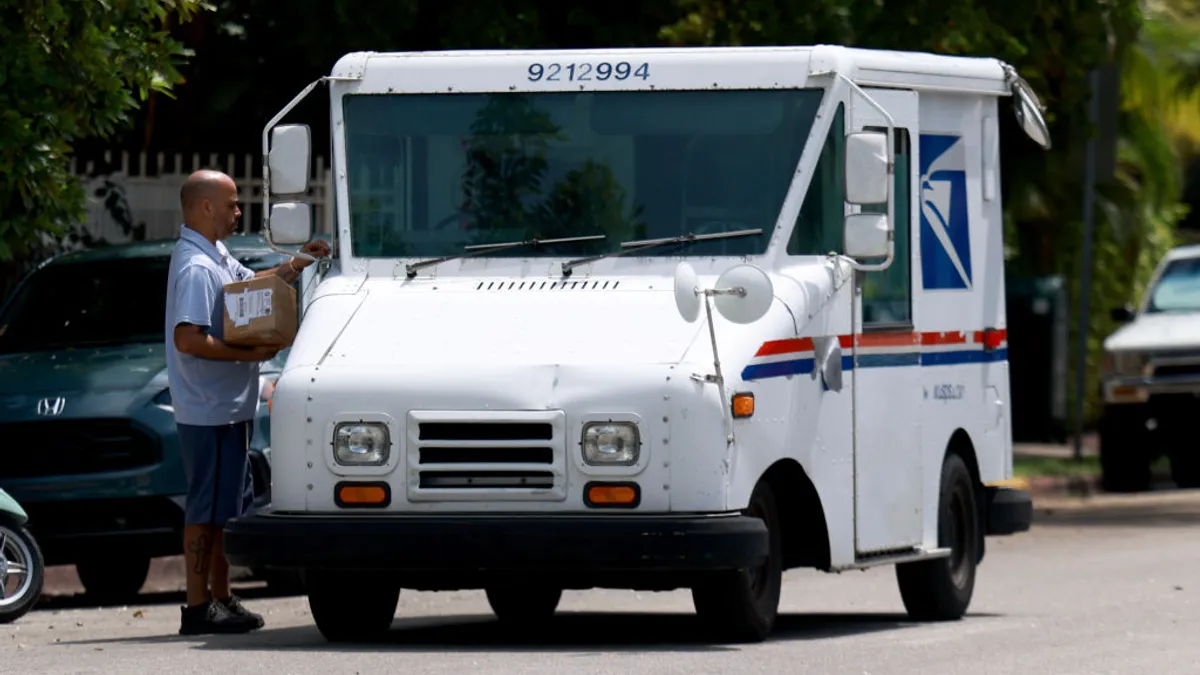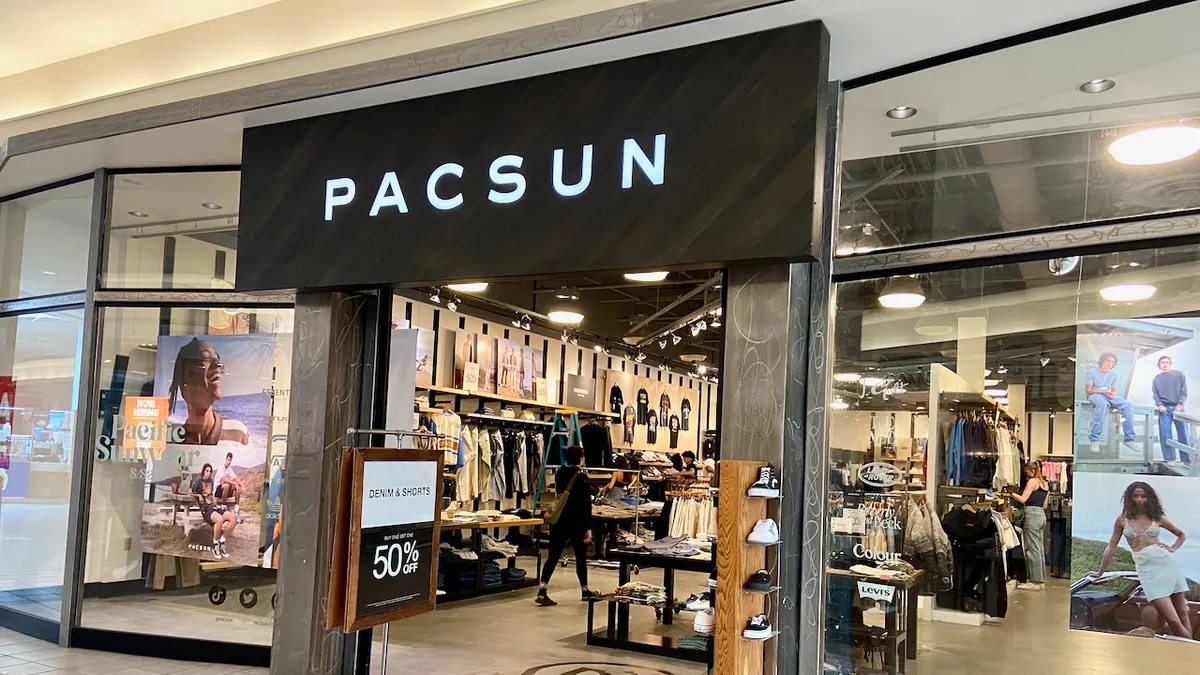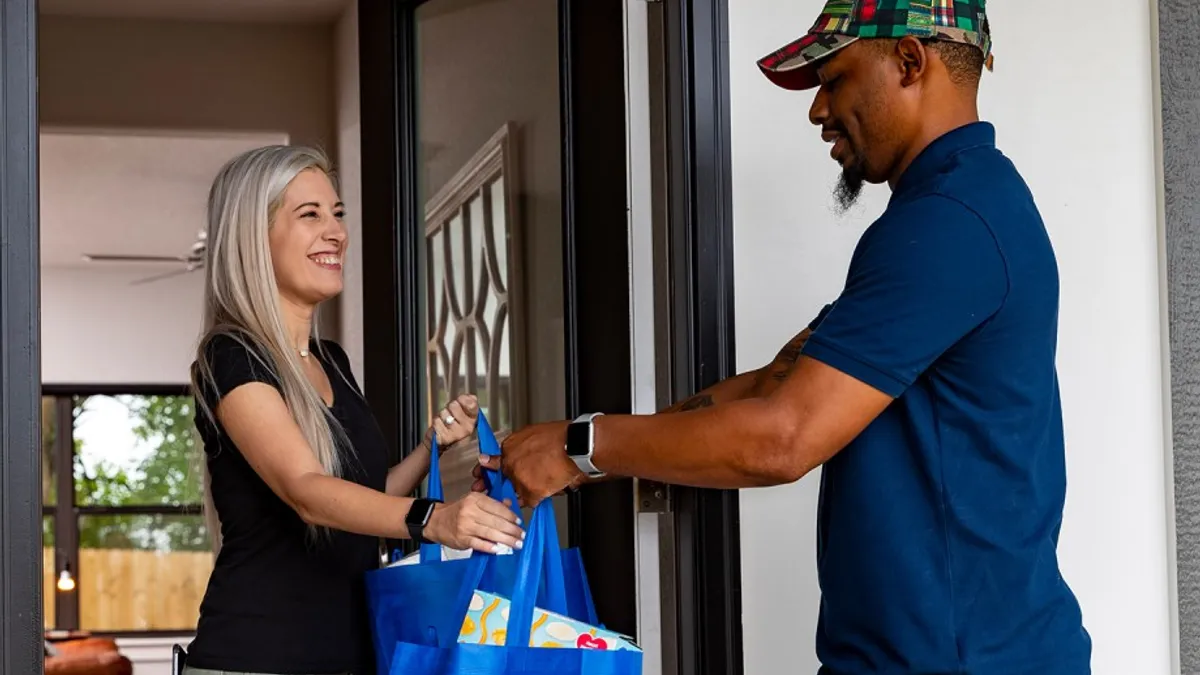Understanding today’s omnichannel retail means learning an entirely new set of terminology: BOPIS, BOSS, etc. And trying to remember all of the acronyms that go along with these emerging channels can become complicated.
To help industry leaders keep track of the vocabulary, Supply Chain Dive put together a list of four of the most-used terms of 2018 and how these new sales channels are affecting logistics.
BOPIS
Origins
BOPIS—buy online, pickup in-store—has skyrocketed into popularity in the last few years and is now responsible for almost 30% of all online retail revenue. However, the term is much older than that, first surfacing five to 10 years ago.
"Using Google Trends, we see that buy online, pickup in-store wasn’t searched much at all until 2006," Jonathan Smalley, founder and CEO of Yaguara, an e-commerce management platform, told Supply Chain Dive in an email. "From there you see consistent and minimal activity until around 2012. Since then Google shows a massive increase in trends for BOPIS."
Supply chain results
Adopting BOPIS has meant technology changes for those working in the retail supply chain.
Retailers diving into BOPIS are adopting technologies such as product tagging and location tracking, digital mapping, location-based routing and notifications, as well as email and SMS platforms for delivering updates to the customers.
Preparing for the future
Success in omnichannel will require creating the right infrastructure for mapping the customer journey, said Smalley. Such infrastructure includes technology for logistics, communication with customers and having a data warehouse for making interactive improvements.
"BOPIS helps bridge the gap between the digital and the physical," Smalley said. "It meets the needs of customers who want their purchases quickly (often same day) and allows you to sell through local inventory and decrease shipping and logistics fees."
BORIS
Origins
BORIS—buy online, return in-store—has also been around for close to a decade, but it has not yet hit the popularity of BOPIS. Similarly, Google Trends reports that BORIS first arrived on the retail scene in 2007 but is less of a linear growth in interest and is very punctuated around the fourth-quarter holiday season, notes Smalley.
Supply chain results
BORIS is a popular offering for customers as it gives them more options for returning items.
According to OrderDynamics research, 70% of click-and-collect users prefer to return items in-store. In addition, between 40% and 59% of all in-store returns result in additional purchases. For the retailer, BORIS means fewer items are sent to a centralized returns depot.
For Smalley, there is no question as to whether or not retailers should offer BORIS.
"If you have a physical location, do it," he said. "This not only gets your customers into your store so that they return or exchange, but they also buy more. It can also save you cost on those pesky prepaid returns."
Preparing for the future
Right now, OrderDynamics is seeing 49.1% of U.S. retailers offering BORIS, but Charles Dimov, VP of marketing at OrderDynamics, explained in an email that in the future, this will become a standard offering.
Therefore, retailers need to prepare their logistics teams to handle BORIS. For example, it’s important to be able to quickly assess whether returned merchandise is in good, re-sellable condition. If so, these items can be immediately re-inventoried and put back on the shelf. In order for this system to work on a large scale for chain stores, managers will need to clearly outline the BORIS process for all employees.
"Ultimately, it means more logistics will be handled at the store, rather than in the distribution center," Dimov said.
Multi or omnichannel inventory management systems are incredibly important for this. Retailers need the ability to track the location, status and overall life cycle of a specific product so that the logistics teams can capture data and improve the efficiency of planning and distribution.
"Again, have the right technology and team in place," Smalley said. "BORIS can drive important customer retention and top-line numbers if managed well. It can also lead to lost inventory if handled poorly."
BOSS
Origins
BOSS—buy online, ship to store—is a term much less common in in the omnichannel world compared to BOPIS or BORIS. The term took off in the mid-2000s as online commerce began to take off.
Supply chain results
There are many efficiencies that BOSS can bring to a retailer.
It helps reduce the chance of out-of-stock goods at a store where customers might want them, for example. It also allows retailers to have all items of an order ready for a customer to pick up at their local store when the customer arrives.
Smalley said BOSS gives retailers with physical and digital presence the best value. It allows retailers to maintain bulk inventory in lower-cost warehouses, while driving customers to a physical space to pick up, interact with the brand and potentially purchase more items.
Smalley also added that BOSS is a great channel for collecting data that can drastically improve planning and the distribution of inventory.
"BOSS allows you to hold the majority of inventory in the warehouse rather than distribute to physical locations," he said. "This way you can track sales of product through specific locations and understand what product types are desired in those locations even if they aren’t physically located there."
Preparing for the future
Physical stores need to be outfitted to support the rise of BOSS.
First, store logistics teams need to be able to receive and differentiate between inventory going into the store and products to be held for in-store pickup. Second, retailers need to assess how much room and what supplies will be needed to receive and manage these orders until pickup, such as signage, a pickup desk, etc.
Dimov said the process could be as simple as unloading incoming inventory, putting the in-store pickup items into a bag and stapling the pickup invoice and bar code to the item. Alternatively, a retailer may decide to make it a much bigger, "white glove" experience.
BODFS
Origins
BODFS—buy online, deliver from store—is just beginning to pop up in 2018 as a fulfillment alternative. This much more recent term is really about last-mile logistics more than the traditional warehouse-to-retail logistics.
Supply chain results
When one of OrderDynamics’ retail clients shifted to a BODFS strategy, it was able to shutter an entire distribution center. According to Dimov, an estimated annual savings for even a small distribution center is $2.5 million (most DC’s run annual costs of $2.5 million to $13 million).
"We are seeing tons of retailers invest in BODFS," said Smalley. "Walmart and Target have both been investing heavily in last-mile logistic technology and infrastructure, while Amazon remains king with Amazon Prime, now delivering you those organic avocados from Whole Foods in as little as one hour. It’s incredible."
Another advantage to this fulfillment method is that the model leverages a store’s existing inventory, keeping inventory fresh.
"Higher inventory turns also reduce the need to discount products at the end-of-season, or end-of-life of the merchandise. All retail segments can leverage BODFS, no matter the merchandise size and weight," Dimov said.
Preparing for the future
BODFS has completely changed how the industry thinks about managing a traditional supply chain.
Historically, an online order ends with a handoff from a logistics provider or a brick-and-mortar delivery. BODFS takes logistics one step further by expecting retailers to manage the physical delivery to a customer’s location.
"If you want to prepare to implement BODFS well, you're going to need a real strategy. It’s a massive new complexity to add to a supply chain and takes real planning. Logistics teams will almost certainly need to build their multiple new, custom technologies to make things work. Don’t do it unless you’re ready to spend," Smalley said.
This story was first published in our weekly newsletter, Supply Chain Dive: Operations. Sign up here.




















